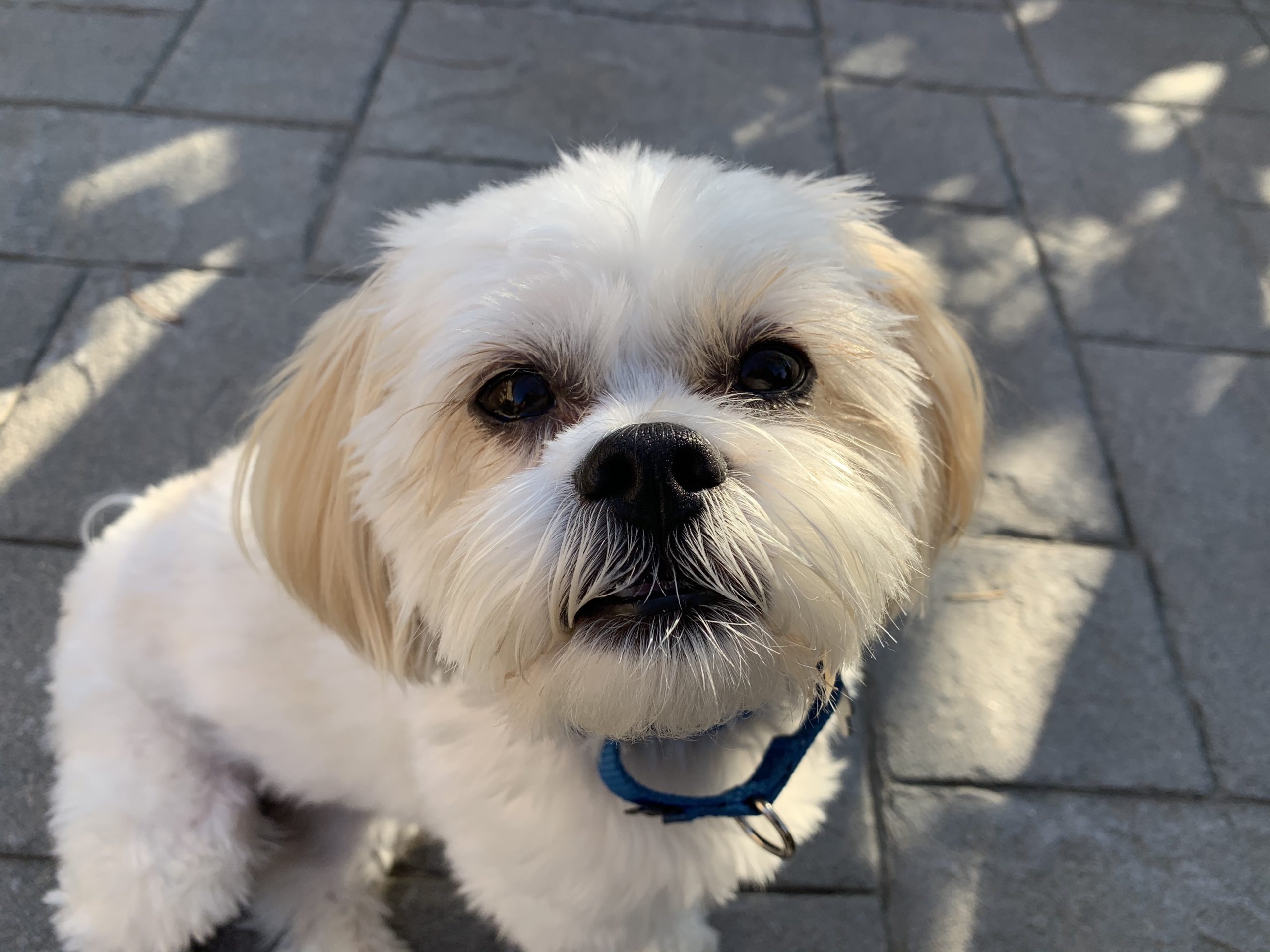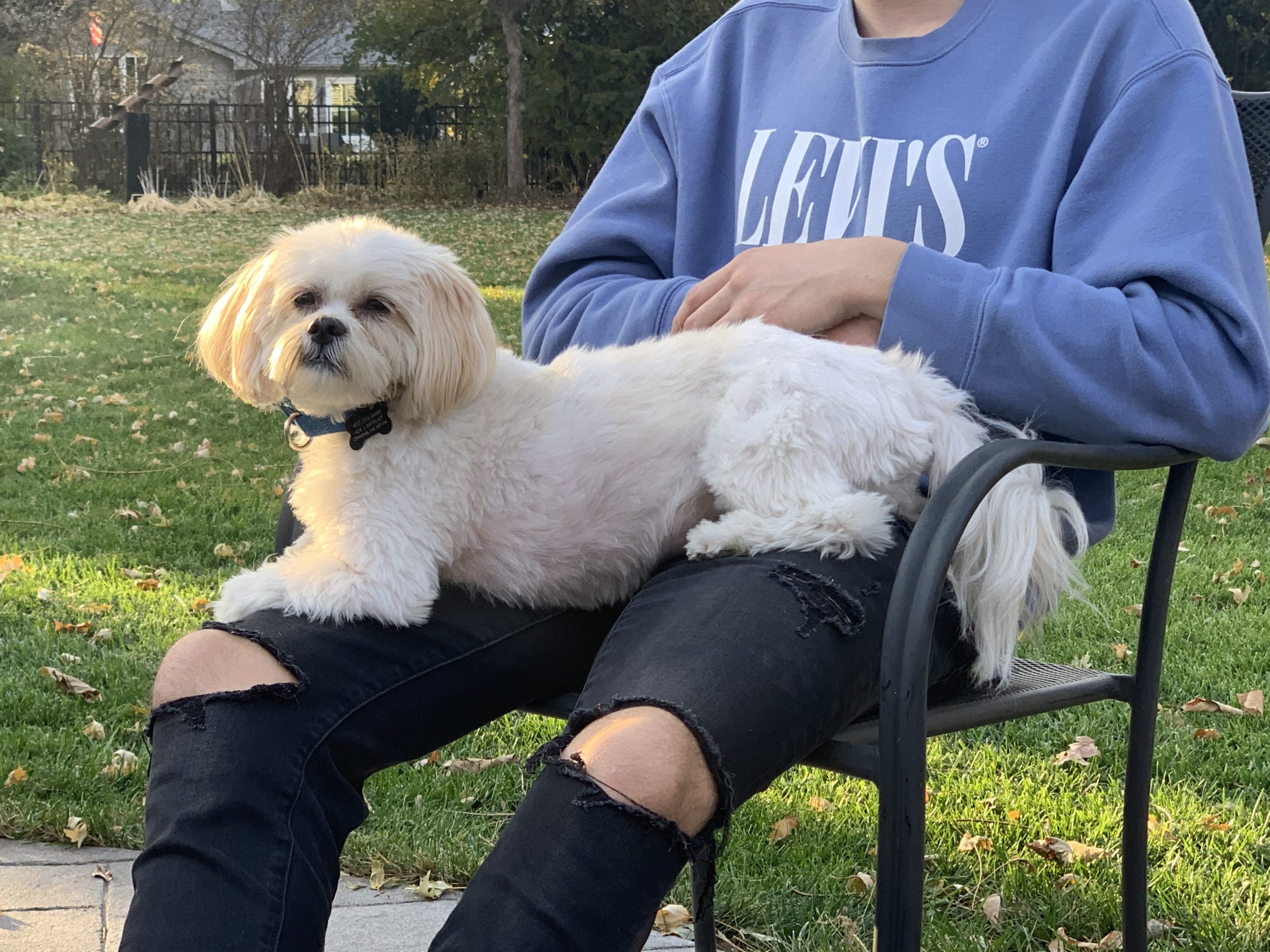Helping a Fearful Dog Learn that New People Are Nothing to Be Afriad Of
By: David Codr
Published Date: November 6, 2020
For this Omaha dog training session, we worked with a 3 year-old Shih Tzu / Bichon mix named Wallace who is fearful around new people; barking and nipping if they approach him.
Knowing that Wallace was not a fan of meeting new people, I set his greeting up for success; leaving a trail of treats from his front door to my location positioned in a spot that he could not see until he was a few feet away.
Wallace did quite a bit of barking as soon as he saw that I was sitting on the ground turned sideways to him. His guardian started to correct him for barking but I asked her to stop. This is a very common mistake that many people make when they have a dog that is barking in protest.
Essentially the dog is communicating that it is uncomfortable or dislikes something. If we do not recognize that as a communication and instead tell the dog to be quiet, we can very easily amplify the dog’s fear or insecurity the same way we would react as humans if someone responded to us the same way when if expressed that we were uncomfortable.
Wallace became so upset that he stopped eating the treats and stood there stationary barking at me. I asked his guardian to call the dog away without putting any pressure on the leash. Anytime you have a dog who is barking or reactive to something, the absolute best thing you can do is increase distance.
You also want to avoid having a dog that is reactive while staying still. This gives them the opportunity to direct all of their attention and energy on whatever it is that they are reactive to. Sometimes we will toss treats behind a dog so that it helps it move away on its own. But since he was too worked up to show interest in the treats, having the guardian call him away was the best next option.
While this was going on, I remained stationary, did not offer any direct eye contact or attempt to pet Wallace. These are other common mistakes that people make around anxious dogs. But when a dog is fearful and reactive, the best thing you can do is be quiet, still and give the dog the opportunity to approach you on it’s own time; even if it takes a little while. Dogs are worth the investment.
It took a few minutes, but eventually Wallace calmed down enough to resume eating the treats that I had sprinkled on the ground. Once that was the case then we headed out for a short walk to seal the deal. Dogs process things by moving forward and usually enjoy walks, so going for a group walk can really help in situations like this.
I suggested that the guardians re-create the same greeting method whenever they have someone come over to their home. Ideally it would be nice to have them arrange to have a neighbor or friend come by once a day for the next week or two while the weather is still nice. The more positive experiences that Wallace has with the sort of greeting, the more comfortable he will become with it.
We sat down in the backyard to discuss Wallace’s issues and were shortly joined with Zach, a dog walker that the family had engaged to help exercise their dog, but who the dog had not warmed up to yet.
I had Zach ignore Wallace which gave the dog the opportunity to come up an approach him in his own time. Within a few minutes I had the dog taking treats from Zach. A couple minutes later we were able to get the dog to jump up on Zach’s lap and relax.
While we continued the session, I shared a number of dog behavior tips that should help provide Wallace with more stimulation and ways to build up his confidence in his guardian’s to provide him with an environment he feels secure in.
When you have a dog that is fearful of new people, it’s important that you build up positive associations at a level of intensity that is not threatening or overwhelming for the dog. It’s not uncommon for under socialized dogs to be scared of meeting strangers, but unless the dog’s anxiety is intense, it is a very treatable condition.
I wanted to film a video that the family could use to arrange additional new person greetings that would have the same success rate that we had had in today’s session. Stopping a dog’s fear is all about building up positive associations. Check out the free positive dog training video below for free tips to help a fearful dog learn to enjoy meeting new people.
Helping a fearful dog get over their anxiety of meeting strangers is very rewarding for me as Omaha’s Dog Behaviorist. Stopping the dog from fearfully reacting to strangers is something that will have a dramatic impact on the dog’s confidence and behavior for the rest of its life.
After filming the above video, we practiced a little recall exercise in the backyard which went amazingly well. I’m just disappointed that I didn’t take a video of how awesome Wallace felt. He zoomed around the backyard running laps, exhibiting joy incarnate. This is another exercise that the guardians can incorporate when introducing their fearful dog to new guests who visit their home. Such an amazing transition for this dog, going from being a fearful dog to a joyful one in the course of 3 hours. Now it will take practice recreating this encounter. The more practice at this he gets, the faster his progression will take place.
To help their guardians remember all of the positive dog behavior tips that I shared in this in-home Omaha dog training session, we filmed a roadmap to success video that you can watch below
Categorized in: Dog Behavior



